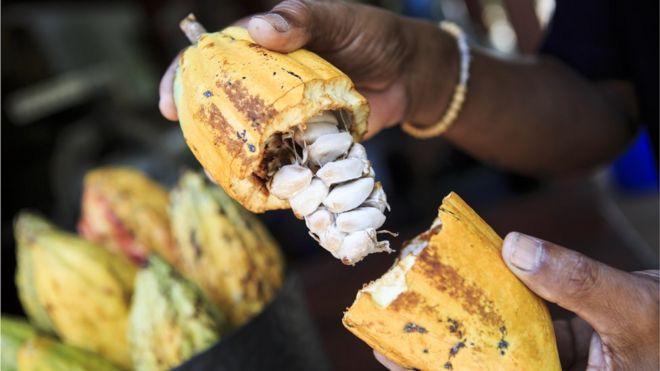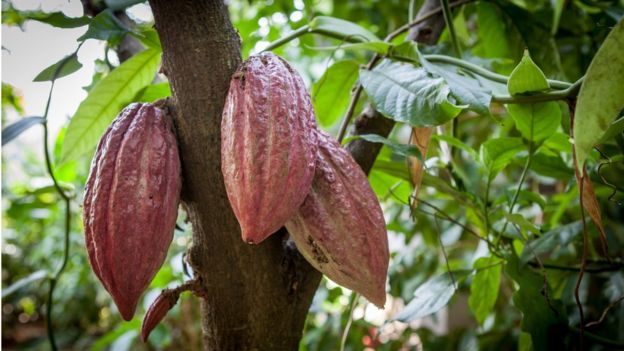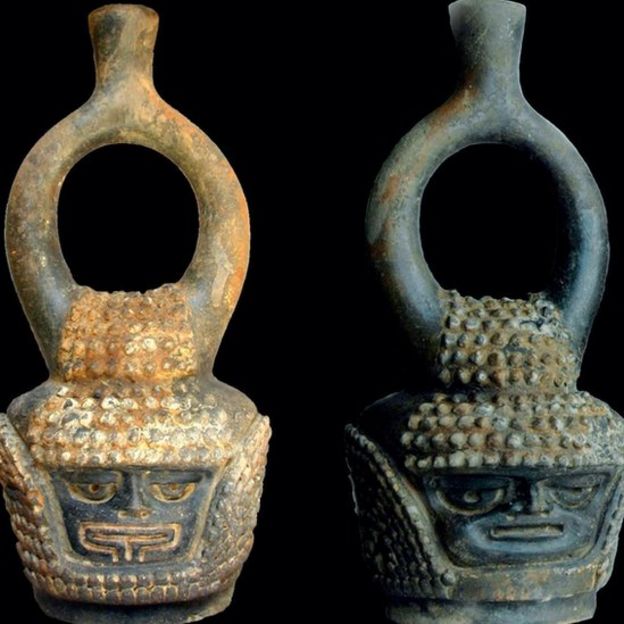You are using an out of date browser. It may not display this or other websites correctly.
You should upgrade or use an alternative browser.
You should upgrade or use an alternative browser.
https://www.theburningplatform.com/2017/11/13/syrian-refugee-rapes-german-pony/
SYRIAN REFUGEE RAPES GERMAN PONY
SYRIAN REFUGEE RAPES GERMAN PONY
R
Robrites

Top Comment
[–]Foregonia 1049 points 8 hours ago
Imagine being a mallow at the top of the bag. You see the hands reaching in, grabbing your friends, your family, stabbing a fat stick straight through their anus and out the top of their head, only to be scorched in burning flame a moment later by an amateur who has no fucking clue how to properly roast one of these sumbitches. You got to turn it slow. Torturing mallows is a dark art that requires a certain degree of satisfaction in the process. Some people get impatient. Sure, the flame is fun, seeing them scorched like that. But I prefer to hear the mallow screaming out their last breath slowly as I rotate it patiently one quarter turn at a time, roughly 4 inches above a flame or 6 above hot coals. Don’t get me wrong, the scorch v. slow roast doesn’t really make a difference for the mallow being burned; they’re already gone from the stick. It’s more about striking fear into those fuckers at the top of the bag.
AgentPothead
Just this guy, ya know?
Not sure if anybody posted this, a place is suing to shut down a marijuana farm cause the smell makes horse riding less pleasant, which as anybody who has ridden a horse knows, is bullshit.
https://www.westword.com/news/marij...anger-colorado-pot-biz-goes-to-trial-10952118
https://www.westword.com/news/marij...anger-colorado-pot-biz-goes-to-trial-10952118
mayorofthdesert
Active member
which as anybody who has ridden a horse knows, is bullshit.
horseshit
R
Robrites
In this kind of situation best thing is to ignite with flames own car and move away fast... ;D LOL
think after that mofos will never teach anybody any lesson..
and it will be 1 for 2 in result for your favor..
you win in the end,thats most important.. ;D hheehehheehe
think after that mofos will never teach anybody any lesson..
and it will be 1 for 2 in result for your favor..
you win in the end,thats most important.. ;D hheehehheehe
I'm really impressed with how well both Jeeps did backing into those spaces and how the red Jeep had the smarts to turn the front wheel in to really frustrate the Mercedes. 

HuffnPufferfish
Member
can you access the towing system with the engines off?
Lol the Jeep on the right costs way more than his base model Mercedes!what a Dumbass lol
R
Robrites
R
Robrites
R
Robrites
Yankees' Giancarlo Stanton Hit by Ball After Red Sox Fan Throws Back His Home Run
https://bleacherreport.com/articles...by-ball-after-red-sox-fan-throws-back-his-hr.
SEND HIM BACK TO MIAMI!
Chocolate: Origins of delicacy pushed back in time
Chocolate: Origins of delicacy pushed back in time
Source: https://www.bbc.com/news/science-environment-46024189

Chocolate has been a delicacy for much longer than previously thought.
Botanical evidence shows the plant from which chocolate is made was first grown for food more than 5,000 years ago in the Amazon rainforest.
Chemical residues found on ancient pottery suggest cocoa was used as a food, drink or medicine by indigenous people living in what is now Ecuador.
Until now it was thought that chocolate originated much later and in Central rather than South America.
"The plant was first used at least 1,500 years earlier than we had previous evidence for," said Prof Michael Blake of the department of Anthropology at the University of British Columbia in Vancouver, a co-researcher on the study.
"And that previous evidence was found in Mexico and Central America."

Facts about the cocoa tree :
Grows naturally in humid, tropical forests and is native to Mexico, Central America and northern South America
The fruit - the cocoa pod - contains seeds surrounded by a white pulp. When the seeds are dried in the sun they turn a brownish colour and are known as cocoa beans
The ingredients for chocolate - cocoa powder and cocoa butter - are prepared from fermented and roasted cocoa seeds
Cocoa products are also used widely in pharmaceutical preparations and skin-care products
In 2008-2009 world cocoa production was 3,515,000 tonnes.
Researchers analysed pottery vessels from the Santa Ana (La Florida) archaeological site in the highlands of Ecuador, which was occupied between 5,300 and 2,100 years ago.
A number of crops have been documented there, including corn, sweet potatoes and the cacao tree Theobroma cacao.
Traces of chemicals and DNA from the plant were found on pottery, suggesting the ground seeds of the cocoa pod were being mixed into a concoction and drunk.
Co-researcher, Dr Sonia Zarrillo of the University of Calgary said grains of starch on the pot appeared to be "unique" to the cacao tree.
The study corroborates DNA data pointing to the tree's origin in the upper Amazon region of northwest South America, which is where the domestic crop also originated.
"It's another gift of the people of Amazonia to the world," said Prof Blake. "It highlights the importance of protecting this habitat.

It is thought that seedlings or seeds of the cocoa tree were carried north into Mexico and Central America, perhaps along sea routes.
Cocoa beans became precious commodities, used as food and drink by the wealthy, or traded for other foods.
Spanish explorers in the 1520s took the cocoa beans home and spread the delicacy throughout Europe.
RMS

Chocolate: Origins of delicacy pushed back in time
Source: https://www.bbc.com/news/science-environment-46024189

Chocolate has been a delicacy for much longer than previously thought.
Botanical evidence shows the plant from which chocolate is made was first grown for food more than 5,000 years ago in the Amazon rainforest.
Chemical residues found on ancient pottery suggest cocoa was used as a food, drink or medicine by indigenous people living in what is now Ecuador.
Until now it was thought that chocolate originated much later and in Central rather than South America.
"The plant was first used at least 1,500 years earlier than we had previous evidence for," said Prof Michael Blake of the department of Anthropology at the University of British Columbia in Vancouver, a co-researcher on the study.
"And that previous evidence was found in Mexico and Central America."

Facts about the cocoa tree :
Grows naturally in humid, tropical forests and is native to Mexico, Central America and northern South America
The fruit - the cocoa pod - contains seeds surrounded by a white pulp. When the seeds are dried in the sun they turn a brownish colour and are known as cocoa beans
The ingredients for chocolate - cocoa powder and cocoa butter - are prepared from fermented and roasted cocoa seeds
Cocoa products are also used widely in pharmaceutical preparations and skin-care products
In 2008-2009 world cocoa production was 3,515,000 tonnes.
Researchers analysed pottery vessels from the Santa Ana (La Florida) archaeological site in the highlands of Ecuador, which was occupied between 5,300 and 2,100 years ago.
A number of crops have been documented there, including corn, sweet potatoes and the cacao tree Theobroma cacao.
Traces of chemicals and DNA from the plant were found on pottery, suggesting the ground seeds of the cocoa pod were being mixed into a concoction and drunk.
Co-researcher, Dr Sonia Zarrillo of the University of Calgary said grains of starch on the pot appeared to be "unique" to the cacao tree.
The study corroborates DNA data pointing to the tree's origin in the upper Amazon region of northwest South America, which is where the domestic crop also originated.
"It's another gift of the people of Amazonia to the world," said Prof Blake. "It highlights the importance of protecting this habitat.

It is thought that seedlings or seeds of the cocoa tree were carried north into Mexico and Central America, perhaps along sea routes.
Cocoa beans became precious commodities, used as food and drink by the wealthy, or traded for other foods.
Spanish explorers in the 1520s took the cocoa beans home and spread the delicacy throughout Europe.
RMS
















